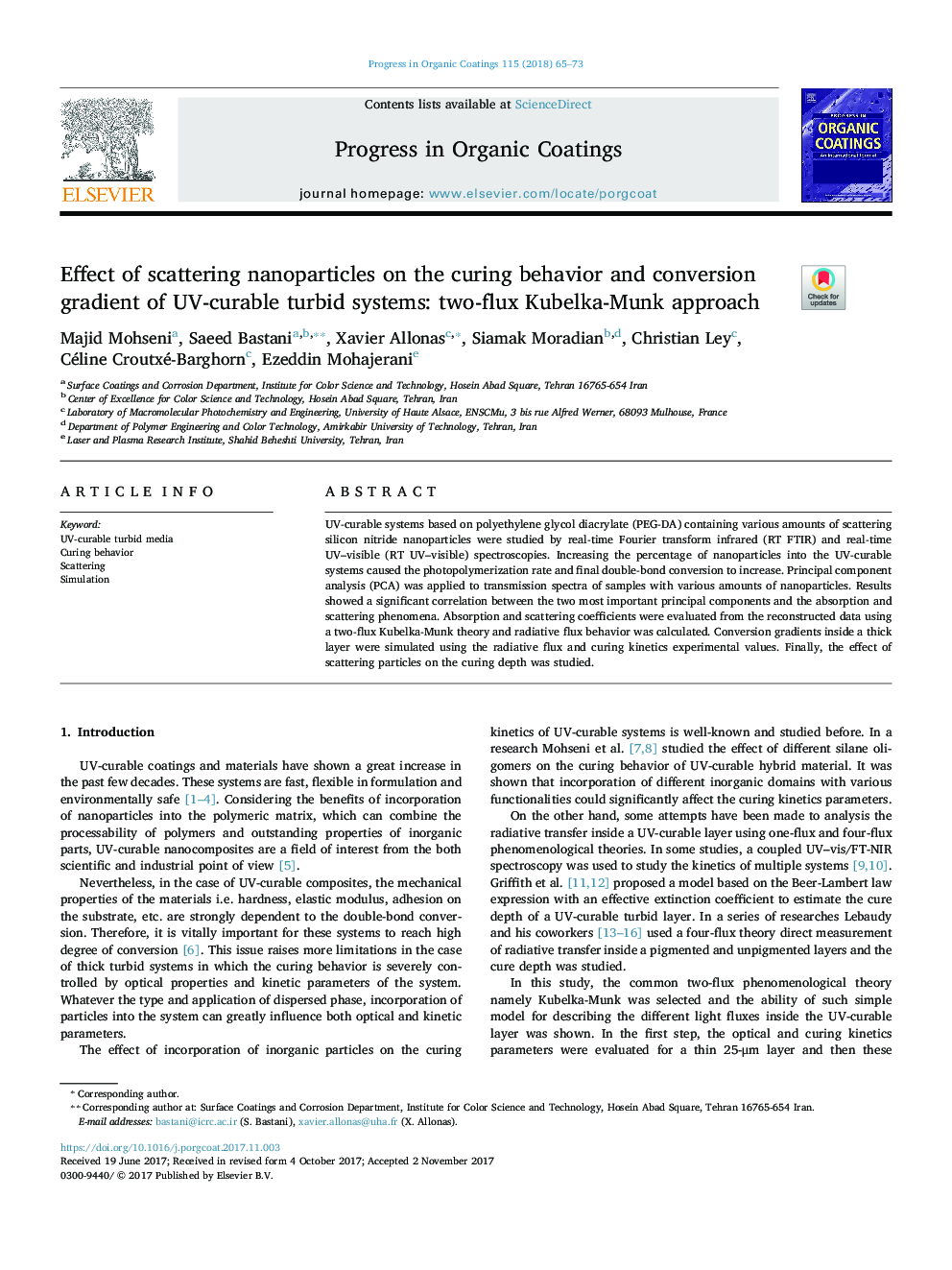| Article ID | Journal | Published Year | Pages | File Type |
|---|---|---|---|---|
| 7106177 | Progress in Organic Coatings | 2018 | 9 Pages |
Abstract
UV-curable systems based on polyethylene glycol diacrylate (PEG-DA) containing various amounts of scattering silicon nitride nanoparticles were studied by real-time Fourier transform infrared (RT FTIR) and real-time UV-visible (RT UV-visible) spectroscopies. Increasing the percentage of nanoparticles into the UV-curable systems caused the photopolymerization rate and final double-bond conversion to increase. Principal component analysis (PCA) was applied to transmission spectra of samples with various amounts of nanoparticles. Results showed a significant correlation between the two most important principal components and the absorption and scattering phenomena. Absorption and scattering coefficients were evaluated from the reconstructed data using a two-flux Kubelka-Munk theory and radiative flux behavior was calculated. Conversion gradients inside a thick layer were simulated using the radiative flux and curing kinetics experimental values. Finally, the effect of scattering particles on the curing depth was studied.
Keywords
Related Topics
Physical Sciences and Engineering
Chemical Engineering
Process Chemistry and Technology
Authors
Majid Mohseni, Saeed Bastani, Xavier Allonas, Siamak Moradian, Christian Ley, Céline Croutxé-Barghorn, Ezeddin Mohajerani,
